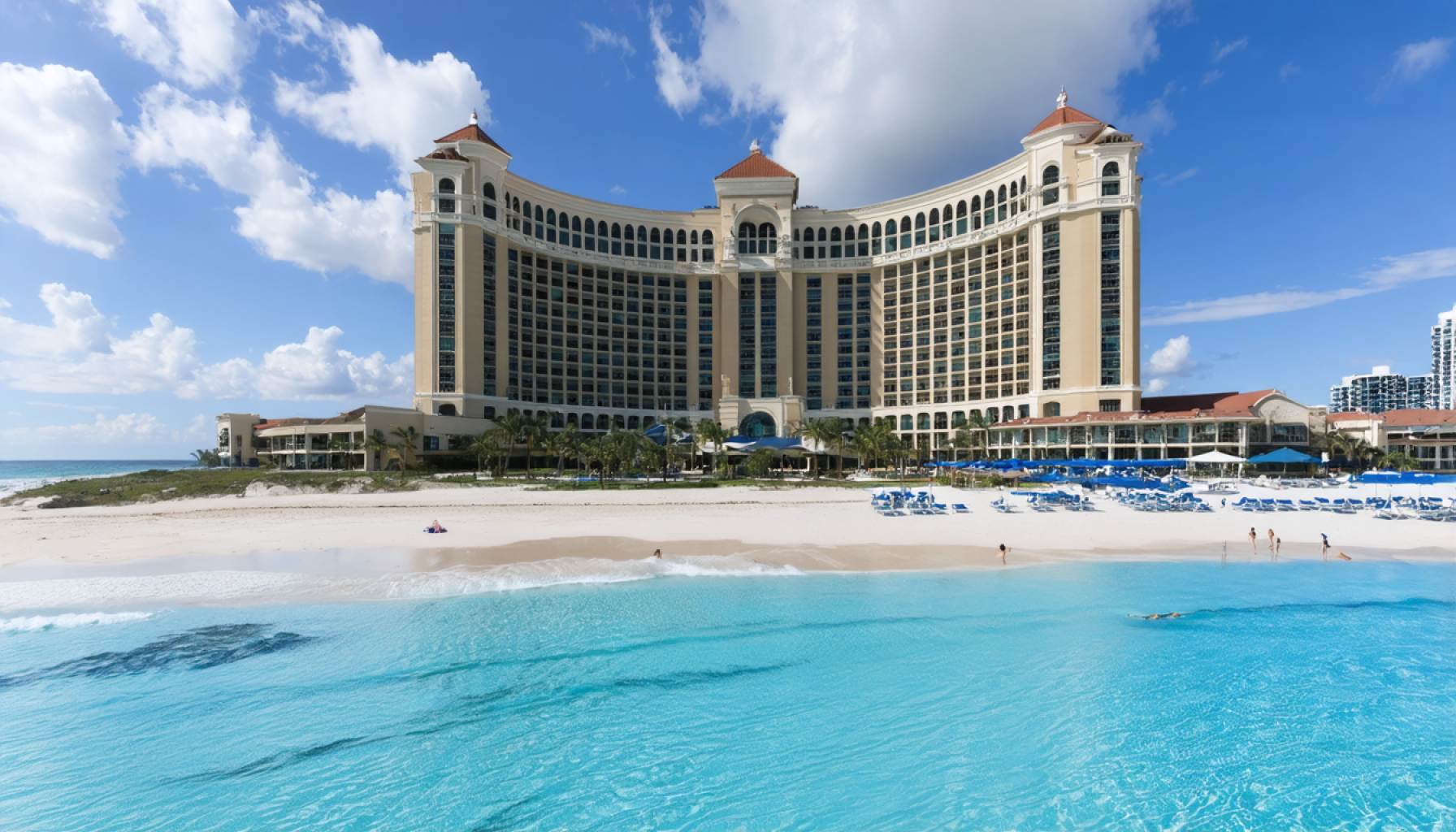- Hilton Grand Vacations Inc. saw a notable 26% rise in share price despite market skepticism.
- The company achieved a 17% revenue growth last year and a three-year 68% revenue increase.
- Its P/S ratio is 0.9x, significantly below the industry average, raising questions about potential undervaluation.
- Analysts predict a 24% revenue growth next year, outpacing the industry’s 15% forecast.
- Investors face the challenge of weighing growth prospects against possible revenue volatility and market skepticism.
- The situation underscores the need to assess beyond numbers and understand the market dynamics shaping valuation.
Amid the hustle and bustle of the hospitality industry, a quiet player has begun to gather attention. Hilton Grand Vacations Inc., with its iconic brand and recent bullish endeavors, witnessed a remarkable 26% upswing in its share price over the last month. But beneath the surface, the financial waters are still turbulent, leaving shareholders pondering whether this is a true recovery or merely a fleeting success.
The intriguing case of Hilton Grand Vacations isn’t just about numbers; it’s a tale of resilience and potential that tugs at the curiosity of seasoned investors and casual market observers alike. The company, known for its premium vacation ownership offerings, recorded a robust 17% revenue growth last year. Aggregate revenues skyrocketed by a striking 68% over a three-year stretch—a testament to its operational tenacity.
Yet, the looming question is why its price-to-sales (P/S) ratio remains at a curiously modest 0.9x, starkly lagging behind the industry average where P/S ratios regularly soar above 1.6x and, at times, even surmount 4x. Is this low ratio a red flag, or merely a market anomaly?
Some market enthusiasts propose that investors remain skeptical, anticipating that such a stellar revenue trajectory may face headwinds moving forward. Eight industry analysts, however, foresee a bright horizon, projecting a 24% revenue leap in the next year, surpassing the industry’s expected 15% growth surge.
This optimism yet wariness paints a complex portrait of Hilton Grand Vacations. It invites questions about hidden risks that may be shadowing its seemingly undervalued status. Critics muse whether market expectations are tempering the share price due to anticipated revenue volatility.
The essence of Hilton Grand Vacations’ narrative is not just about adopting a wait-and-see approach, but rather exploring why its valuation does not mirror its apparent potential. For investors, the key takeaway may lie in balancing the act between seeing burgeoning growth indicators and acknowledging underlying uncertainties.
In an industry often driven by confidence and brand allure, the story of Hilton Grand Vacations serves as a reminder—a challenge to decode the narratives beyond the numbers, to understand the dynamics of trust and skepticism shaping the market’s conscience. In navigating this intricate landscape, the decision for stakeholders straddles the line between seizing an undervalued gem and approaching with prudent clarity.
Unlocking the Full Potential of Hilton Grand Vacations: A Closer Look
Understanding the Current Landscape
While Hilton Grand Vacations Inc. has made headlines with its recent share price surge and significant revenue growth, the underlying dynamics present a multifaceted story. The brand’s recognition in the vacation ownership space is undeniable, yet its current valuation sparks various debates.
Expanding on Key Metrics
1. Revenue and Growth Trajectory: The company boasts a staggering 68% revenue increase over the past three years. This growth is attributed to strategic expansions and enhanced marketing efforts. Yet, the price-to-sales (P/S) ratio lags at 0.9x compared to industry peers often exceeding 1.6x. This discrepancy could hint at investor caution or unmet market potential.
2. Analyst Projections: Industry analysts are optimistic, projecting a 24% revenue growth for the next year, eclipsing the industry average of 15%. This prediction underscores confidence in the company’s strategic direction and market foothold.
3. Resilience Amid Challenges: Despite lower-than-expected valuations, Hilton Grand Vacations has shown operational resilience, securing its place as a formidable player in hospitality.
Pressing Questions and Insights
1. Why is the P/S Ratio Low?: Factors contributing to the low P/S ratio could include market skepticism about sustaining growth or perceived risk exposures unique to the timeshare industry.
2. What are the Risks?: There are concerns about economic trends impacting participant affordability and occupancy rates, along with potential regulatory changes affecting timeshare offerings.
3. Is It a Hidden Gem or a Cautionary Tale?: Analysts believe Hilton’s price may reflect cautious investor sentiment toward potential revenue volatility despite strong historical performance.
Real-World Use Cases and Industry Trends
– Evolving Consumer Preferences: Consumers are increasingly seeking flexible vacation solutions, a trend that favors Hilton’s business model, especially as remote work remains prevalent.
– Sustainability Focus: There is broadening pressure on hospitality companies to embrace sustainable practices. Hilton’s ongoing efforts in this area could prove advantageous.
Actionable Recommendations
1. Investment Strategy: For investors, a careful analysis of Hilton’s strategic initiatives, alongside a broader look at the hospitality sector, can provide a balanced view of potential risks and rewards.
2. Market Research: Staying informed about emerging travel trends and consumer behaviors can offer insights into Hilton’s future potential.
3. Consider Diversification: To mitigate risk, consider diversifying investments across multiple hospitality ventures beyond timeshare-focused entities.
Quick Tips for Aspiring Investors
– Understand the Dynamics: Dive deep into financial reports and market analyses to comprehend both Hilton’s business model and market positioning.
– Monitor Economic Indicators: Pay attention to economic indicators such as consumer spending and vacation trends which directly impact Hilton’s performance.
By exploring these dimensions, stakeholders can make informed decisions that align with their financial goals and risk tolerance.
